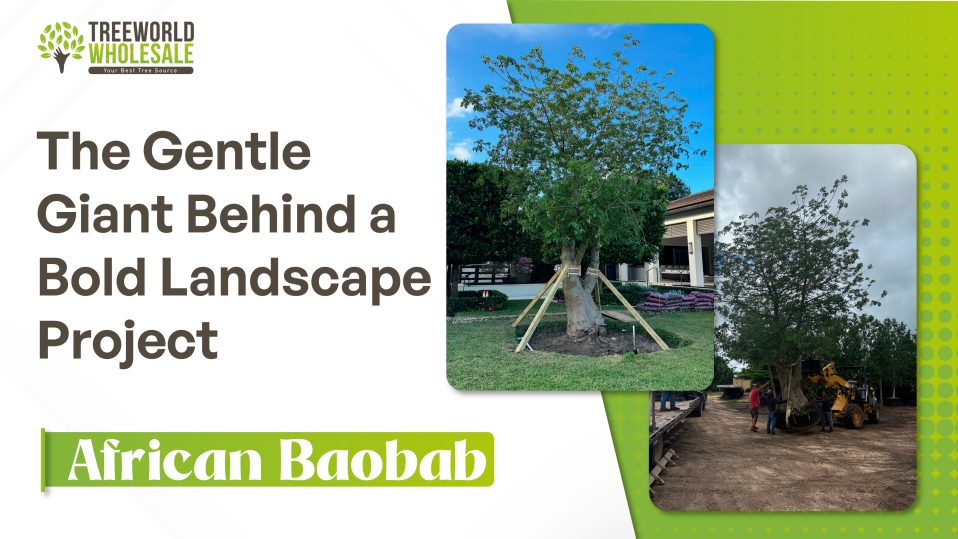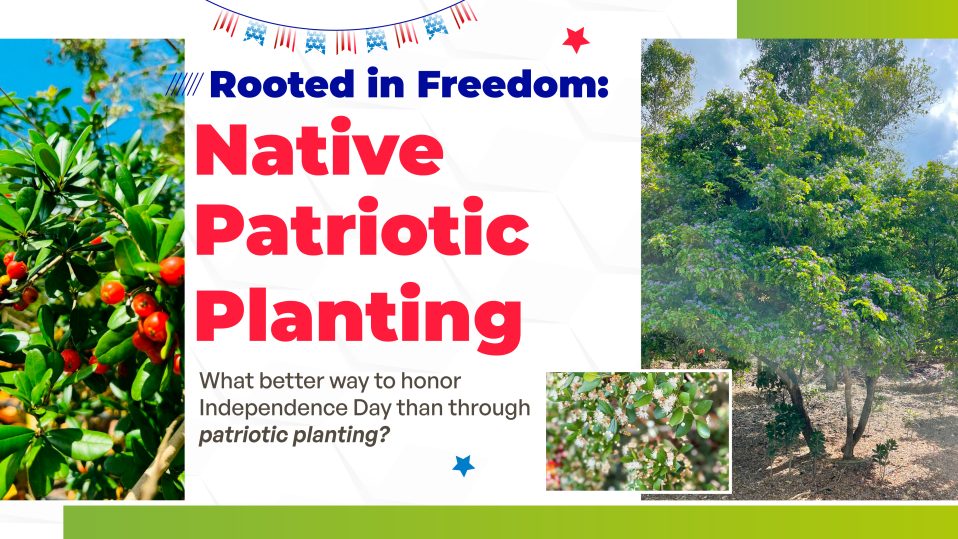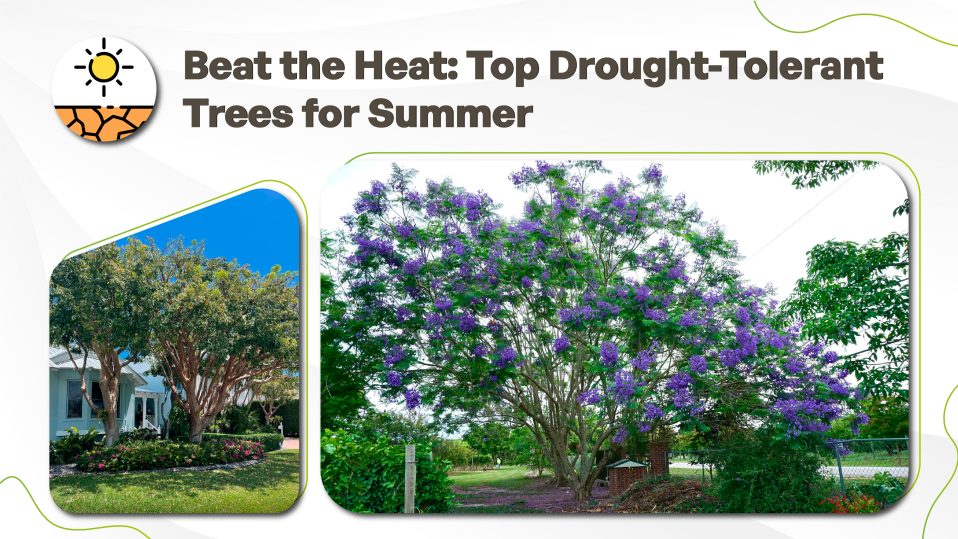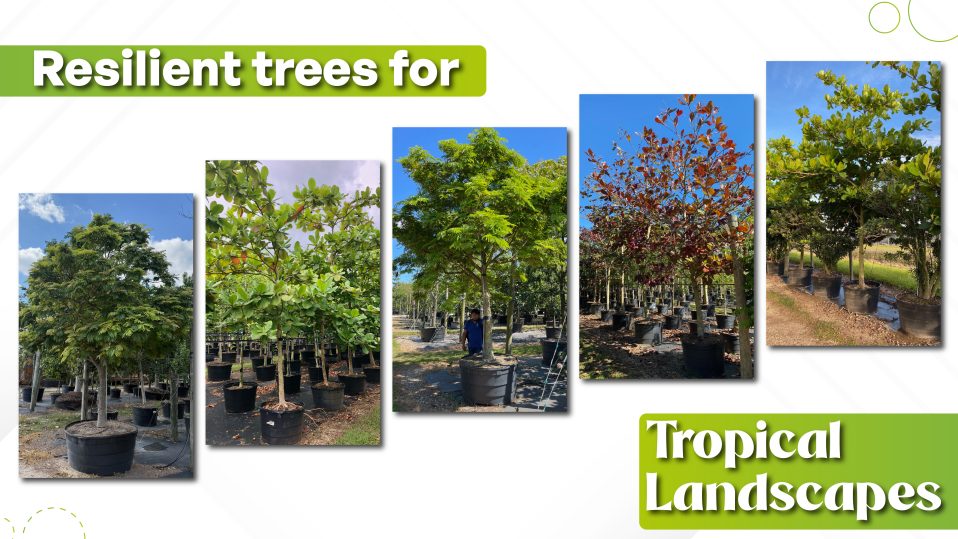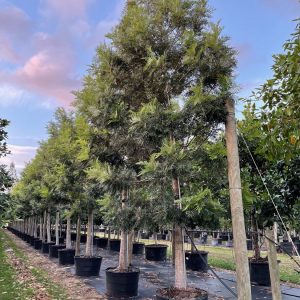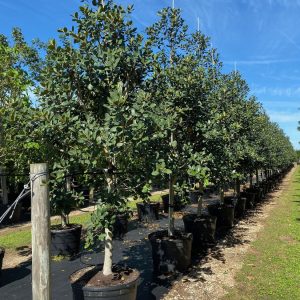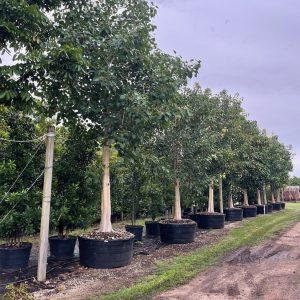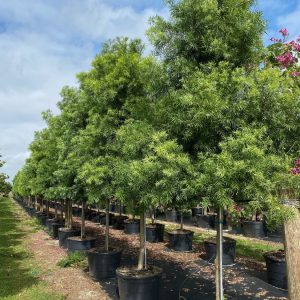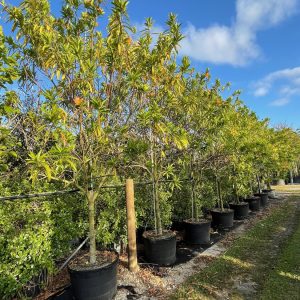Treeworld Wholesale
Bienvenido a su sede de árboles, arbustos y palmeras en el sur de Florida y Caribe
Treeworld Wholesale Tenemos más de 200 especies listas para su proyecto de paisajismo. Muchos de estos son nativos del sur de la Florida y el Caribe.
Cientos de especies de árboles en nuestra sede. Muchos de estos también son adecuados para el Caribe. Los continuos esfuerzos de investigación nos muestran qué especies de árboles y en qué tamaño se necesitarán en el futuro.
Seeds
<h3>Sustainable seeds</h3> <p> Cultivamos las semillas recolectadas de forma sostenible de la naturaleza, lo que significa que puede encontrar casi cualquier especie de árbol nativo del sur de Florida en nuestro vivero. También cultivamos especies no autóctonas que tienen una gran demanda. Nuestros árboles se cultivan para paisajes domésticos, parques, edificios comerciales o cualquier otro lugar que necesite un árbol para completarlo.</p>Request a Quote
<h3>We're glad to help</h3> <p>Proporcionamos una lista exhaustiva de los árboles que llevamos para que los examine. Luego puede completar una solicitud de cotización y uno de nuestro equipo de ventas se comunicará con usted para discutir sus necesidades..</p>Why you should choose us
Species
<p>Variety of species to choose from. Ideal for South Florida and the Caribbean.</p>
For any location
<p>We grow trees perfect for any location. Homes, commercial buildings, parks and more.</p>
Ready to help you
<p>Nuestro equipo siempre esta listo para ayudar cuando se necesite. Llámanos away.</p>
¿En busca de árboles, arbustos y palmas del sur de la Florida y el Caribe?
-
The Gentle Giant Behind a Bold Landscape Project
In the world of landscape architecture projects, there are trees that make a lasting impression. We call them statement or accent trees. And we can all agree that there is no bigger statement than an African Baobab: a gentle giant. At a recent landscape project in Florida, TreeWorld delivered a 600-gallon Adansonia digitata. A rare and majestic specimen that’s changing the conversation around landscaping projects in the region. This wasn’t just about planting a tree. It was about crafting a sense of place and belonging. African Baobab in our latest Landscape Project A Vision for Bold Design This landscape project aimed to push beyond the conventional, opting for a design narrative that embraced scale, character, and ecological presence. That’s where the baobab came in. With its sculptural form and storied history, it brought both drama and rooted authenticity to every landscape project. The One and Only African Baobab (Adansonia digitata) Native to the African savannas, the baobab is one of the most iconic and awe-inspiring trees for sale in the world—often called the “Tree of Life.” Its massive trunk can store thousands of gallons of water, a feature that allows it to survive extreme drought. The canopy spreads like an umbrella, offering generous shade and a commanding silhouette that transforms any setting. The specimen delivered for this project stands out for its unique form, aged bark texture, and wide presence. Exactly the kind of visual statement large-scale landscape projects seek. At 600 gallons, this baobab required expert handling and transport, underscoring the logistical scale involved in incorporating large and exotic trees into design plans. The Gentle Giant The Adansonia digitata is instantly recognizable by its thick, bottle-shaped trunk and umbrella-like canopy. This species can grow up to 70 feet tall, with trunks that store thousands of gallons of water—making it a remarkably drought-tolerant tree and well-suited for warm climates like Florida’s. Baobabs are incredibly long-lived, often surviving for hundreds or even thousands of years. Their smooth, fibrous gray bark is resistant to fire and damage. Deciduous by nature, they shed their leaves during dry or colder seasons, revealing a sculptural silhouette that adds dramatic impact to any landscape project. And during spring, the African baobab produces bright green compound leaves and large, white, night-blooming flowers that attract pollinators like bats. Beyond their visual presence, baobabs have ecological and cultural value. Their fruit is rich in vitamin C and antioxidants, and parts of the tree have been used in traditional medicine across Africa. Combining resilience, rarity, and visual impact, the baobab is a living monument that elevates any landscape architecture project. The Story Behind the Tree Legend has it that the baobab was planted upside down by the gods. Its roots, they say, stretch toward the sky while its branches reach deep into the earth. A playful myth that perfectly matches the tree’s bold and extravagant shape. But beyond the myth, the African baobab holds a deep and beautiful legacy. As mentioned before, in Africa it is known as the “Tree of Life,” as the baobab has long been a symbol of resilience, community, and generosity across the continent. Some trees […]
Read more -
Rooted in Freedom: Native Patriotic Planting
What better way to honor Independence Day than through patriotic planting? Thoughtfully choosing native trees that are free to thrive speaks volumes. As fireworks light up the sky and flags wave proudly in July, there’s another way to celebrate America’s legacy—through our native roots. The good thing is, by building a native landscape, you’re not only reflecting the American colors but staying true to our values: resilience, independence, and unity with the land. So let’s plant with a purpose and celebrate this 4th of July with more than just fireworks. Discover trees that not only thrive in our Florida soil but are also resilient, beautiful, and a genuine approach to a sustainable future. The Meaning of Patriotic Planting Patriotic planting is more than just replicating our American flag’s colors—although that’s a really cool feature. Beyond red, white, and blue, patriotic planting is a commitment to our environment and future generations. Native plants add real value to our landscapes. They support local ecosystems by feeding native birds, bees, and butterflies. They help us manage our resources wisely by requiring less water and maintenance. And, of course, they preserve Florida’s heritage by keeping our natural landscapes alive and thriving. Choosing natives isn’t just about landscape design—it’s a quiet revolution for sustainability and a greener future. It builds resilience against storms and drought, and creates balance with nature. What better way to embody American values right in your own backyard? 4th of July – Plants That Show True Colors Now for the real deal: choosing our true colors to accentuate landscape designs with native trees that naturally echo the flag’s palette—perfect for creating a vibrant 4th of July garden. Our first choice for this task is the renowned Myrcianthes fragrans—best known as Simpson’s stopper or twinberry—and it’s truly a knockout. Whether in its single‑trunk or multi‑trunk form, this Florida native tree for sale is bound to draw attention. It typically grows to a height of 10–20 feet but can reach up to 30 feet under ideal conditions. The tiny, deep‑green leaves contain aromatic oils with a nutmeg-like fragrance and grow densely in full sun along smooth-barked branches. In shadier conditions, the foliage becomes less dense, and the trunk displays its attractive, smooth, exfoliating bark. Red Accents Simpson’s stopper is a great choice for showcasing red accents in your garden for the 4 of July, as it produces small red-to-orange berries that are a favorite among local wildlife—especially birds—hence its second most popular common name, the twinberry tree. The fruit is also edible for humans, though it’s not widely used in culinary applications. White Highlights If it’s white highlights you’re looking for, Simpson’s stopper offers those too. Its fragrant white flowers bloom periodically throughout the year and eventually develop into the same attractive red berries mentioned above. The flowers attract many species of butterflies, and the berries appeal to birds—especially Florida’s state bird, the mockingbird. This makes Simpson’s stopper a sustainability superstar! Not only does it support local wildlife, but it also requires little to no irrigation once established. Low-maintenance and ecologically beneficial, it perfectly aligns with the values of resilience and resource-conscious design. But if […]
Read more -
Beat the Heat: Top Drought-Tolerant Trees for Summer
Choosing the right drought-tolerant trees for summer is not just smart — it’s sustainable. At TreeWorld Wholesale, we specialize in drought-tolerant trees for Florida that thrive in our tropical climate while reducing water dependency and easing maintenance stress. Here in Florida and the Caribbean, we are no strangers to hot summers and to the fact that during this season, trees play a vital role. As living organisms, trees experience a range of changes and challenges depending on their species, age, and environmental conditions. Here’s a breakdown of what typically happens to trees in summer, and why choosing wisely and prioritizing resilience matters. Understanding Trees’ Needs During Summer Growth Spurts Resilient Trees for Summer First and foremost, let’s talk about the trees’ summer needs! It may sound a bit amusing, but it’s essential. Trees help cut cooling costs and make outdoor spaces more livable, but to support us, we must understand their needs and behavior. Summer marks a period of intense activity for most trees, especially in warm, tropical regions. With longer days and stronger sunlight, trees grow faster — putting out new leaves, stretching their branches, and expanding their roots. Young trees, in particular, take advantage of the season’s energy to establish themselves more rapidly. But this growth spurt also increases the tree’s demand for water. As temperatures rise, trees lose moisture more rapidly through transpiration—the process by which water evaporates from leaf surfaces. Without consistent watering, especially in summer, trees—particularly newly planted ones—can quickly show signs of stress, including wilting, curled or scorched leaves, and even premature leaf drop. Watering Trees in Summer As temperatures climb and rainfall becomes sporadic, proper summer tree irrigation becomes one of the most critical aspects of care—especially for newly planted trees, which are particularly vulnerable to heat and drought stress. Without consistent moisture at the root zone, they can struggle to establish or even survive. In Florida and the Caribbean, where sandy soils drain quickly and summer heat accelerates evaporation, irrigation must be designed to deliver deep, infrequent watering rather than shallow, frequent sprays. Deep watering encourages trees to develop strong, deep root systems that are more resilient to both drought and wind. On the other hand, overwatering or poor drainage can lead to root rot, nutrient leaching, and increased susceptibility to pests and diseases. Surviving Summer with Smart Irrigation and Drought-Tolerant Trees Ultimately, smart irrigation isn’t just about saving water—it’s about building stronger, more self-sufficient landscapes that thrive in Florida’s unique climate. And that begins with choosing the right trees for sale from the start. So beyond understanding summer irrigation needs, we need to analyze why drought-tolerant trees make a difference. Summer brings heat, strong sun, and often uneven rainfall, all of which place high water demands on landscapes—especially young or shallow-rooted trees. During this time, trees need careful watering to avoid stress, wilting, or even decline. But not all trees require the same level of care. This is where drought-tolerant species truly shine. These trees are naturally adapted to thrive with less water once established, making them ideal for South Florida’s hot, dry spells. By choosing drought-tolerant trees that reduce the […]
Read more -
Resilient trees for Tropical Landscapes
We’re in South Florida, and of course, we love our tropical foliage trees. We’re blessed with a wide variety of options. However, choosing the right tree for landscaping isn’t just about aesthetics—it’s also about resilience. That’s why it’s important to select wisely. So, if you’re considering investing in resilient tropical foliage trees that add texture, color, and dimension to your design while creating a balanced and diverse landscape, keep reading. What are Tropical Foliage trees? Even though we’re in South Florida, and the definition might seem straightforward, it’s important to describe what tropical foliage trees are. This tree category is naturally found in tropical and subtropical climates. They thrive in warm, humid environments with plenty of rainfall. Some of their key features include broad, leathery, or glossy leaves that help them absorb maximum sunlight in their native environments, such as the Pacific Almond tree (Terminalia catappa) or various species of magnolias. Another key feature is that most tropical foliage trees are evergreen, meaning they maintain their leaves year-round, providing continuous shade and greenery. Finally, and not least important, this category is notable for its exotic nature. With their wide variety of vibrant colors, large sizes, and striking textures, tropical foliage trees are often used in landscaping to create stunning designs. Resilient tropical foliage trees for stunning landscaping But we need to be true to ourselves; not every tree works everywhere; there are certain trees that really go the extra mile. At TreeWorld we know it is not just about aesthetics—it’s also about resilience. While you may desire an alluring tropical foliage design, it must also be practical and thoughtfully planned. So today we are highlighting a tropical foliage tree we consider versatile and sturdy, falling certainly into the resilient tree category. Pithecellobium Arboreum Popularly known as the Cojoba tree or Lorito tree, this evergreen is native to the tropical regions of the Americas, commonly found in countries with warm climates and abundant rainfall. It has come to play a vital role in landscaping design due to its resilient nature. Characterized by its vibrant green, feathery, compound pinnate leaves, it consists of small, oval-shaped leaflets, giving the tree a delicate fern-like foliage yet dense appearance. Typically reaching heights of 30 to 50 feet, it’s classified as a medium-sized tree, providing excellent shade for smaller outdoor spaces. Thanks to this fast-growing tree’s rounded crown and branching structure, it’s also ideal for parks, gardens, and streetscapes. Even though the foliage display on its own creates a cooling and soothing effect in landscapes, the Lorito tree has other alluring characteristics, such as its small, cream-colored or pale yellow, mildly fragrant flowers that emerge in clusters, adding a subtle yet attractive touch during its blooming season (spring-summer). These flowers attract pollinators like bees and butterflies, contributing to the tree’s ecological role. The Pithecellobium arboreum also produces long, coiled pods containing seeds, a feature typical of many members of the Fabaceae family. These seed pods are quite striking and turn red, enhancing its tropical appeal. Moreover, the Cojoba tree thrives in well-drained soils and tolerates a variety of soil types, from sandy to loamy. Loving full […]
Read more

